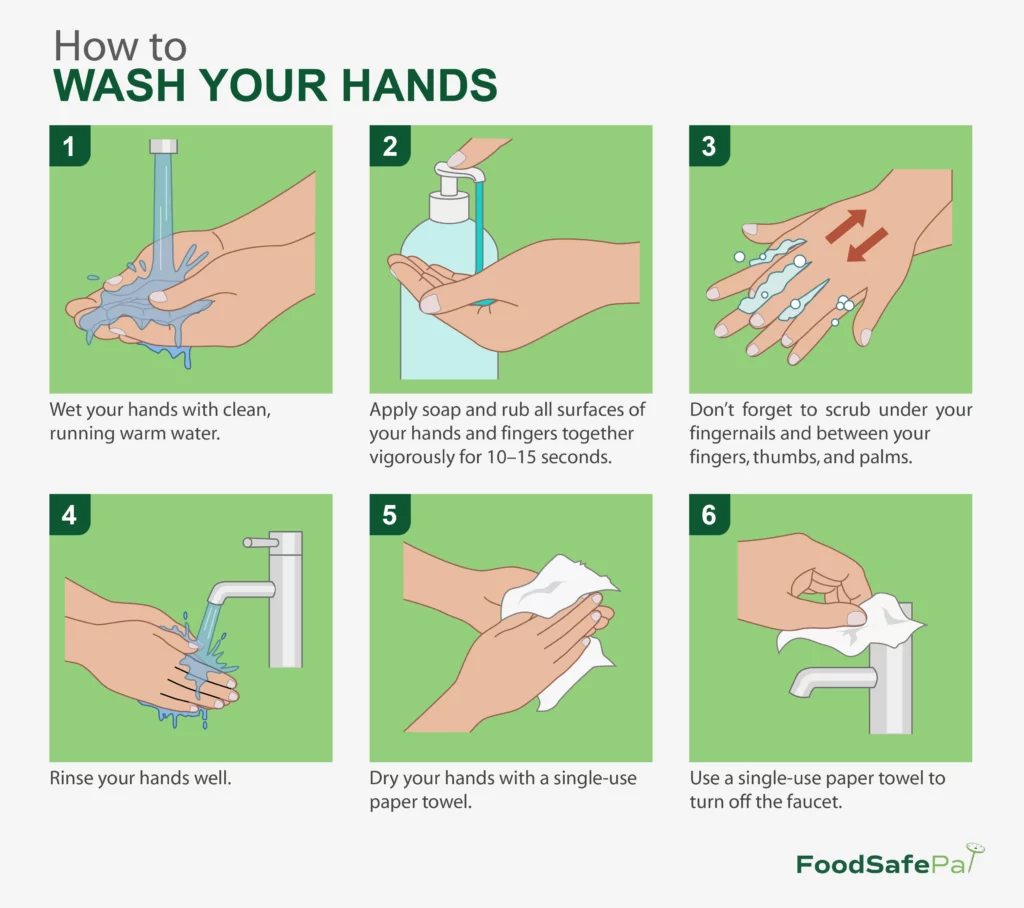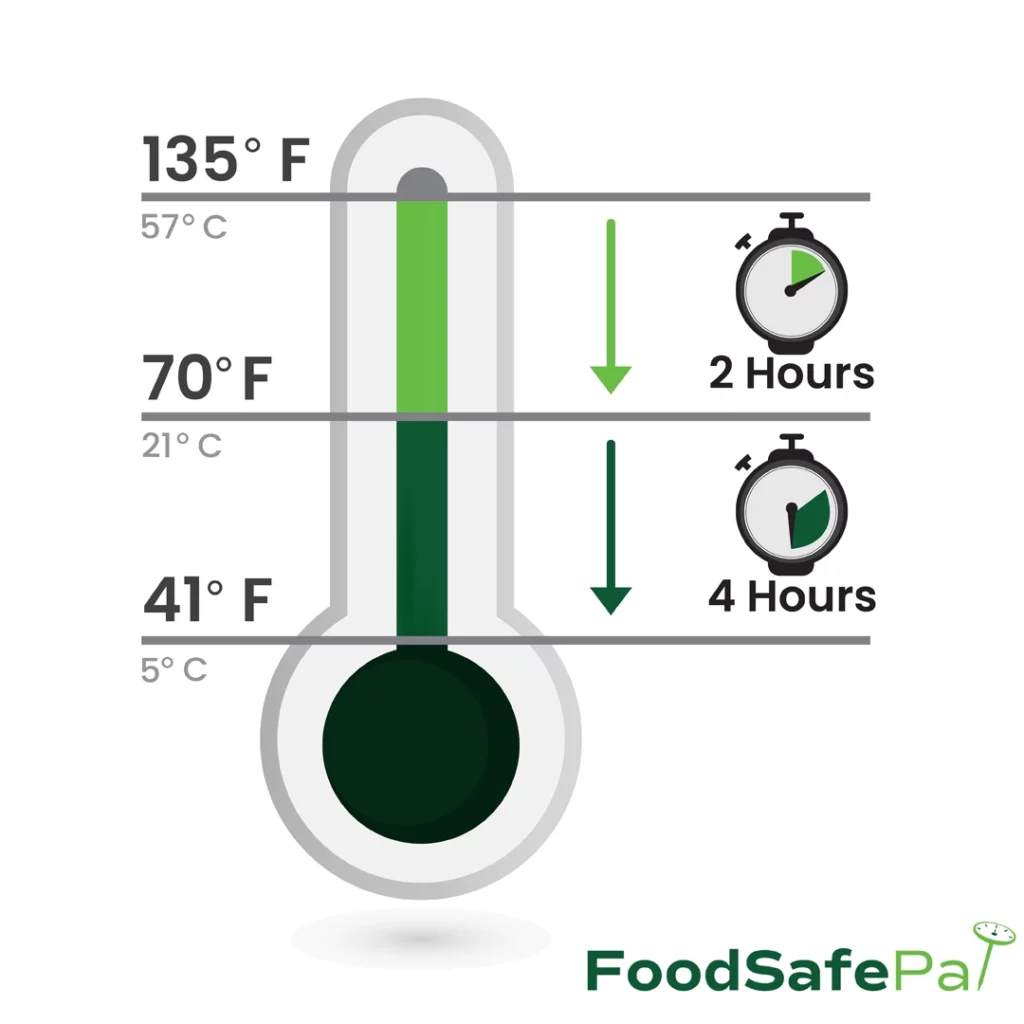South Dakota Required Dietary Inservice Training
Residents of nursing homes and assisted living facilities are a highly susceptible population.
This means that they are more likely than the general public to develop a foodborne illness and experience severe symptoms as a result.
To reduce the risk of foodborne illnesses, South Dakota requires that nursing homes and assisted living facilities provide inservice training on critical food safety topics.
This article lists the required dietary inservice training for South Dakota nursing homes and assisted living facilities.

Required dietary inservice topics
South Dakota requires that the dietitian or dietary manager provide ongoing inservice training — usually within 30 days of hire and annually — to dietary staff on the following topics (1, 2):
Foodborne illnesses
Foodborne illnesses — or food poisoning — are caused by consuming a food or beverage contaminated with a pathogen, such as a bacteria, virus, or parasite.
Of the more than 250 known pathogens that cause foodborne illnesses, six spread easily through food and make people very ill.
These six pathogens are known as the “Big 6,” and include:
- Norovirus
- Hepatitis A
- Shigella
- Shiga toxin-producing Escherichia Coli (STEC)
- Salmonella Typhi
- Salmonella (nontyphoidal)
Educate your staff that if they have been diagnosed with or exposed to one of these illnesses they must report it to you.
Your staff should also know to report certain symptoms to you.
They include:
- vomiting
- diarrhea
- jaundice (yellowing of the skin and eye white)
- sore throat with a fever
These symptoms may indicate a foodborne illness and easily spread.
Handwashing
Handwashing is one of the best ways to reduce the risk of foodborne illnesses and the spread of pathogens.
Unfortunately, many dietary workers don’t wash their hands how, when, or where they’re supposed to, so it’s your responsibility to ensure they do.
Here are the proper handwashing steps:
- Wet your hands with clean, running warm water.
- Apply soap and rub all surfaces of your hands and fingers together vigorously for 10-15 seconds.
- Don’t forget to scrub under your fingernails and between your fingers, thumbs, and palms.
- Rinse your hands well.
- Dry your hands with a single-use paper towel.
- Use a single-use paper towel to turn off the faucet.

Download this handwashing poster for FREE!
Make sure your dietary staff wash their hands:
- when entering a food preparation area
- before putting on food-safe gloves and between glove changes
- before preparing a special order for someone with a food allergy
- before beginning food preparation
- before handling clean equipment and utensils
- when changing tasks, such as switching from handling raw foods to working with ready-to-eat foods
- after handling soiled dishes or utensils
- after touching your face or other parts of your body
- after coughing, sneezing, blowing your nose, or eating or drinking
- after handling service animals or aquatic animals such as shellfish in display tanks
- after using the restroom
Finally, ensure your dietary staff knows that they can only wash their hands in a sink designated for handwashing — never in sinks used to prepare foods, wash dishes, or dispose of mop water and other liquid waste.
Safe food handling and preparation
Handling food unsafely can lead to cross-contamination — the transfer of pathogens from one food or surface to another.
Cross-contamination commonly occurs when a dietary worker handles raw animal foods and then switches to handling ready-to-eat foods.
It also occurs when dietary workers handle RTE foods like sandwiches, salads, and washed fruits and vegetables with their bare hands instead of using single-use gloves or another barrier like tongs, deli tissue, or spatula.
This is a common food safety mistake in nursing homes.
Cross-contact is also something your dietary workers must know how to prevent.
It occurs when a food allergen rather than a pathogen is transferred from one food or surface to another.
Finally, make sure your dietary workers know the minimum internal temperatures that animal foods must reach to kill pathogens and how to properly calibrate and use a food thermometer to verify the temperature.
Safe serving and distribution methods
Safe serving and distribution have largely to do with holding food at the proper temperatures
Holding food at the proper temperatures ensures that it doesn’t slip into the temperature danger zone where bacteria grow and multiply rapidly.
Your staff should know to hold hot food at 135ºF (57ºC) or higher and cold foods at 41ºF (5ºC) or lower.
While being hot- or cold-held, make sure your staff knows to check the temperature at least every four hours to ensure it maintains a safe temperature.
Checking the temperature more often is even better since it allows your staff to take corrective action if the food is within the temperature danger zone and recondition it to make it safe again.
Educate your staff on the proper use of a food thermometer to monitor the temperatures, and that the temperature gauge on holding devices like a steam table reflects the temperature of the equipment — not the internal food temperature.
Safe leftover food handling
Educate your staff on the two-stage cooling method to ensure that food doesn’t spend an unsafe amount of time in the temperature danger zone.
In the first stage, cool food from 135ºF (57ºC) — the minimum temperature at which food must be hot-held — to 70ºF (21ºC) within two hours, and then from 70ºF (21ºC) to 41ºF (5ºC) within four hours to complete the second stage.

Download this two-stage cooling method poster for FREE!
Educate your staff on the acceptable methods for cooling foods (1):
- Set up an ice-water bath. Place food in a prep sink — never a handwashing sink — or a large pot that is filled with ice water.
- Stir the food. Use an ice paddle — a plastic paddle that you fill with water and freeze — to stir the food frequently.
- Use a blast chiller. As the name suggests, these blast food with cold air to quickly lower their temperature. Blast chillers are used primarily by larger food operations due to their high costs.
To speed up the process, separate dense or liquid items like casseroles, mashed potatoes, rice, and soups into shallow pans and cut thick items like roasts into smaller pieces.
For time-temperature control for safety (TCS) foods, educate your staff to label the food with the date or day by which it needs to be served or tossed if it will be held for 24 hours or longer.
You can refrigerate TCS foods for up to seven days.
Finally, educate your staff on the proper storage order for refrigerated foods to reduce the risk of cross-contamination:

Download this refrigeration storage poster for FREE!
Time and temperature controls
Food that requires time and temperature controls to keep them safe is known as TCS foods.
Examples of TCS foods include:
- dairy products
- meats, poultry, and seafood
- heat-treated plant foods, like cooked onions, rice, baked potatoes, and soy protein products like tofu
- cut melons, tomatoes, carrots, and leafy greens
- raw seed sprouts
Educate your dietary staff on how to keep TCS foods safe throughout each phase of its flow by limiting the time they spend in the temperature danger zone.

Educate your dietary staff on these stages of food flow:
- Receiving. Educate on the proper temperature to receive food and how to inspect it for signs of contamination.
- Thawing. Educate on safe thawing techniques.
- Cooking. Educate on the minimum internal cooking temperatures.
- Holding. Educate on the proper holding temperatures and the importance of regular and accurate temperature monitoring.
- Cooling. Educate on the two-stage cooling process and safe ways to speed up the cooling process.
- Reheating. Educate on safe reheating methods and temperatures.
Sanitation requirements
Cleaning and sanitizing food-contact surfaces are necessary to prevent cross-contamination and cross-contact.
A clean kitchen also deters pests like rodents and insects, which can also spread pathogens.
Educate your staff on the steps they must follow to properly clean and sanitize food-contact surfaces:
- Remove any loose or caked-on food particles.
- Scrub the surface using warm water and a detergent to remove stuck-on food particles, grime, and oils.
- Rinse the surface with clean water to wash away any detergent residue.
- Following the directions on the container, apply a sanitizing solution.
- Allow the surface to air dry (never use a cloth or towel for drying since this can recontaminate the surface).
You should also ensure your staff knows how to clean and sanitize stationary equipment like ranges, grills, and microwaves:
- Remove any loose or caked-on food particles.
- Scrub the surface using warm water and a detergent to remove stuck-on food particles, grime, and oils.
- Rinse the surface with clean water to wash away any detergent residue.
- Following the directions on the container, apply a sanitizing solution.
- Allow the surface to air dry (never use a cloth or towel for drying since this can recontaminate the surface).
Wiping cloths are great for cleaning and sanitizing tables and stationary equipment, while a dishwasher and 3-compartment sink are ideal for everything else.
Thus, make sure your staff also knows how to properly use your dishwasher and the temperatures it much reach to properly sanitize as well as how to use a 3-compartment sink.

Download this 3-compartment sink poster for FREE!
Nutrition and hydration
The final dietary inservice training for South Dakota nursing homes and assisted living facilities is nutrition and hydration.
This topic is best left to the dietitian since they are trained in identifying factors that adversely affect nutritional status and employing evidence-based nutrition interventions.
The dietitian should educate on the various factors that can lead to malnutrition and dehydration in nursing home and assisted living residents and the role dietary staff members play in identifying these risks.
Summary
South Dakota requires the dietitian or dietary manager to provide annual inservice training on important food safety topics to food handlers within 30 days of hire and annually.
Food safety and sanitation audits
In addition to educating your dietary staff on the required dietary inservice training topics, you should also regularly conduct food safety and sanitation audits.
Doing so allows you to identify and correct food safety concerns, which can not only keep your resident safe but also save your center from costly survey tags.
Aim to conduct these audits at least monthly but more often if you identify multiple and reoccurring food safety concerns.
Conduct these audits at different times of food preparation and serving, and have other staff members — dietary or other staff — conduct them often to provide a more clear, bias-free picture of food safety concerns.
You can also train staff not involved in foodservice like administration and nursing on how to conduct these audits for a more unbiased report.
If you don’t have an audit form, you can download this one as a PDF document for free:
Download a food safety and sanitation audit form for free!
Summary
South Dakota requires the dietitian or dietary manager to provide annual inservice training on important food safety topics to food handlers within 30 days of hire and annually.
The bottom line
Nursing home and assisted living residents are more likely to develop foodborne illnesses and experience severe symptoms as a result.
To reduce the risk of foodborne illnesses, South Dakota requires the dietitian or dietary manager to provide inservice training on foodborne illnesses, proper handwashing, time and temperate controls for food safety, and safe food handling, preparation, and serving techniques to food handlers.
The remaining mandatory inservice topics include safe leftover food handling, sanitation requirements, and nutrition and hydration.
If you’re looking for inservice training, FoodSafePal offers an online course that covers all the South Dakota required dietary inservice training topics, except for nutrition and hydration.
Along with conducting regular inservice training, conducting food safety and sanitation audits can provide a clearer picture of the food safety concerns at your center and the topics you should emphasize more.






